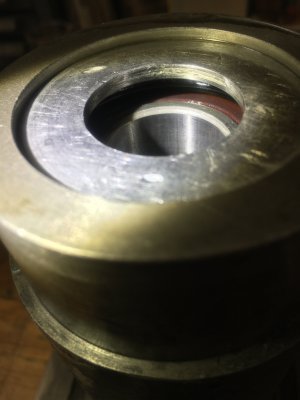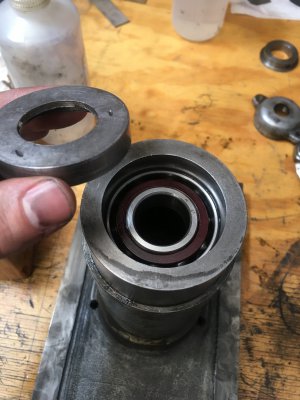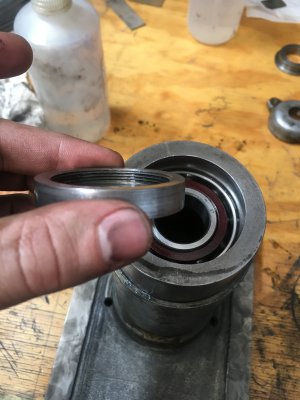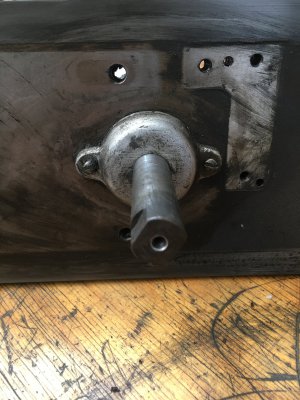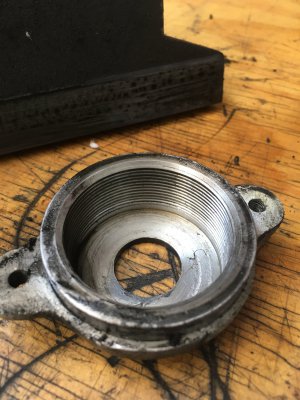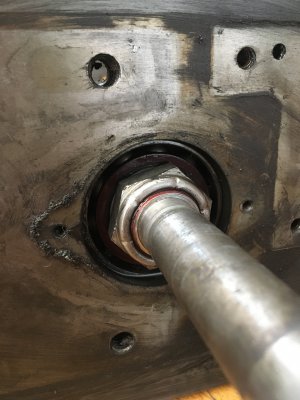- Joined
- Jan 17, 2020
- Messages
- 5
Interesting. I just looked at mine (a 1951 machine) and it does not have that oiler. Please let us know when you figure out where it feed to!
I use Mobil Vactra #2 on my machine. Elsewhere I have read that using detergent motor oil on machine tools is not recommended - I'm not enough of an expert to know if this is true or not, but I figure it makes sense to use a lubricant designed for machine tools. My machine has gits oilers for the ways, but no grease fittings anywhere. My machine does not have any oilers on the top - I just reach around behind with a pump oiler.
Just to follow up on this: I pulled the spindle today and it does indeed use ball bearings. The solid metal insert that I had found under the set-screwed-on dust cap appears to be another cap that had been press fit into the housing. The inside of this additional cap is threaded (for no apparent reason) and I believe this must have been an addition to the machine - purpose unknown. Perhaps to provide a dam to keep spindle oil from dripping out? (my machine had an oil cup added to the top of the spindle, so the bearings were running partially under oil).I am unsure about the spindle bearings - once the wheel hub was removed and the 'dust cap' that is set screwed to the spindle was removed, I don’t see any evidence of bearings - just something that looks like Babbitt in the spindle housing. I am not yet sure if this is a 'cap' or whether this machine could have had plain bearings.
